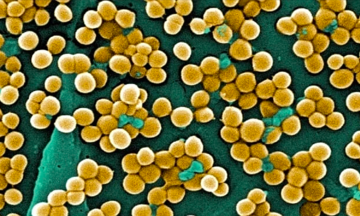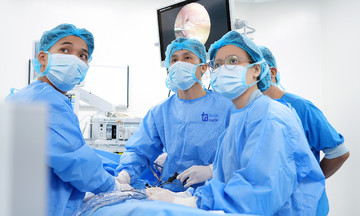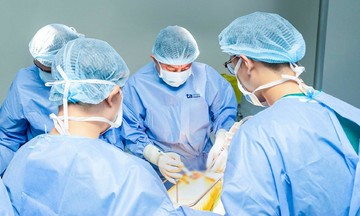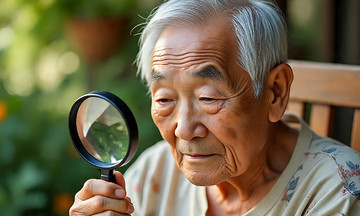Mai paid 10 million VND for an eyebrow tattoo at a beauty salon that advertised "the highest quality Korean ink on the market, painless procedure, and lifetime guarantee". However, after just two months, the blue-black ink faded to a grayish-blue, and began flaking unevenly, causing discomfort. The salon staff retouched the color several times, but the problem persisted, leaving her eyebrows patchy and darkened.
At Tam Anh General Hospital in District 7, Dr. Nguyen Thi Kim Dung, head of the Dermatology - Cosmetic Dermatology unit, observed that Mai's eyebrow tattoo was unevenly colored, blurred, lacking sharpness, and had slight raised scars from improper removal techniques.
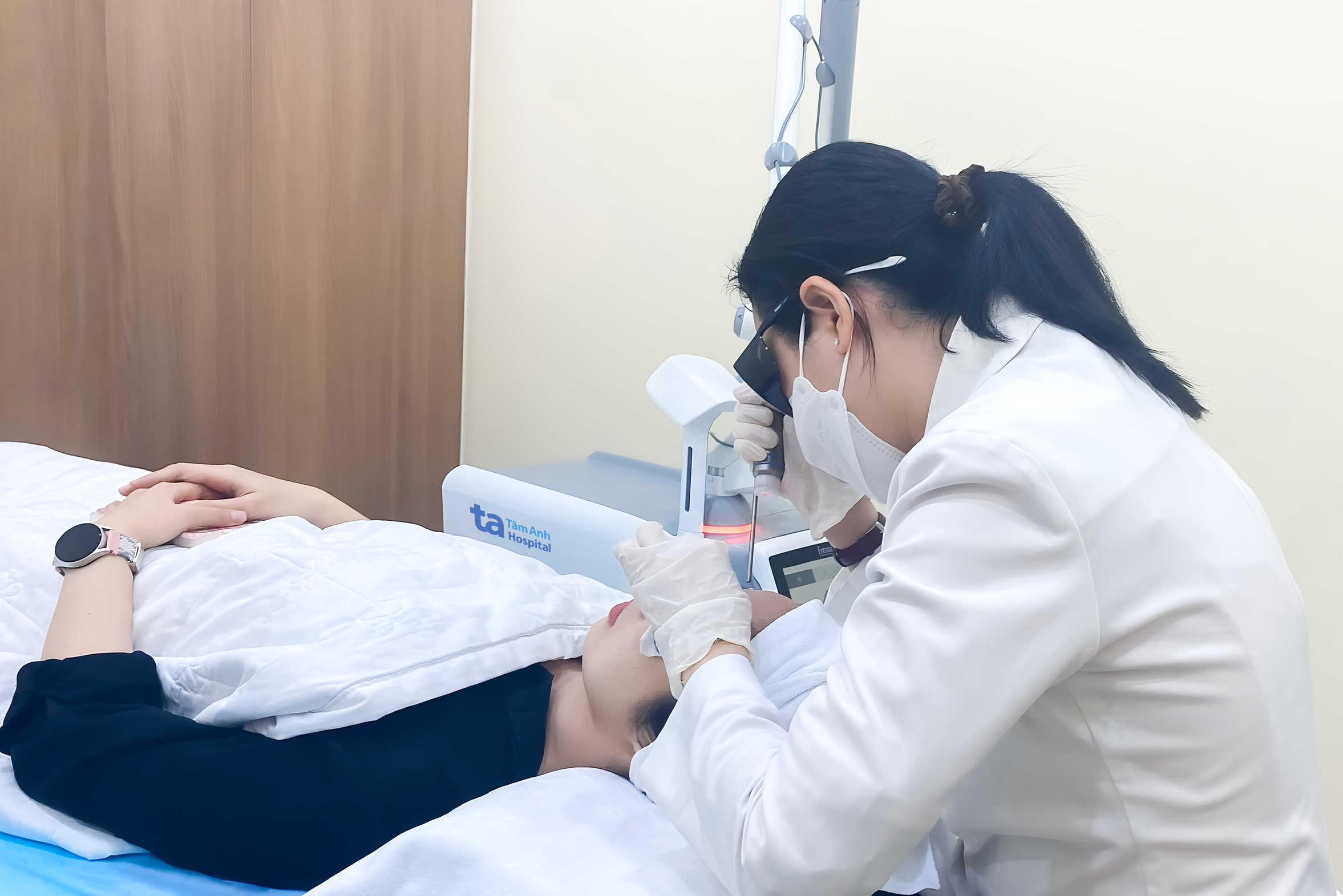 |
Dr. Dung uses pico laser to remove Mai's eyebrow tattoo. Photo: *Tam Anh General Hospital, District 7* |
Dr. Dung prescribed pico laser removal using both full beam and fractional modes, over a course of 6-8 sessions. The full beam mode uses specific wavelengths tailored to each ink color, minimizing the impact on the skin's natural structure. Fractional pico delivers segmented laser beams, creating tiny holes in the skin for deeper laser penetration. This releases gas from the treated area, reducing damage, post-inflammatory hyperpigmentation, and the burning sensation during removal. Dr. Dung also advised Mai on post-treatment care and sun protection for optimal results.
After three laser sessions, Mai's eyebrows showed significant improvement, with the tattoo ink fading considerably.
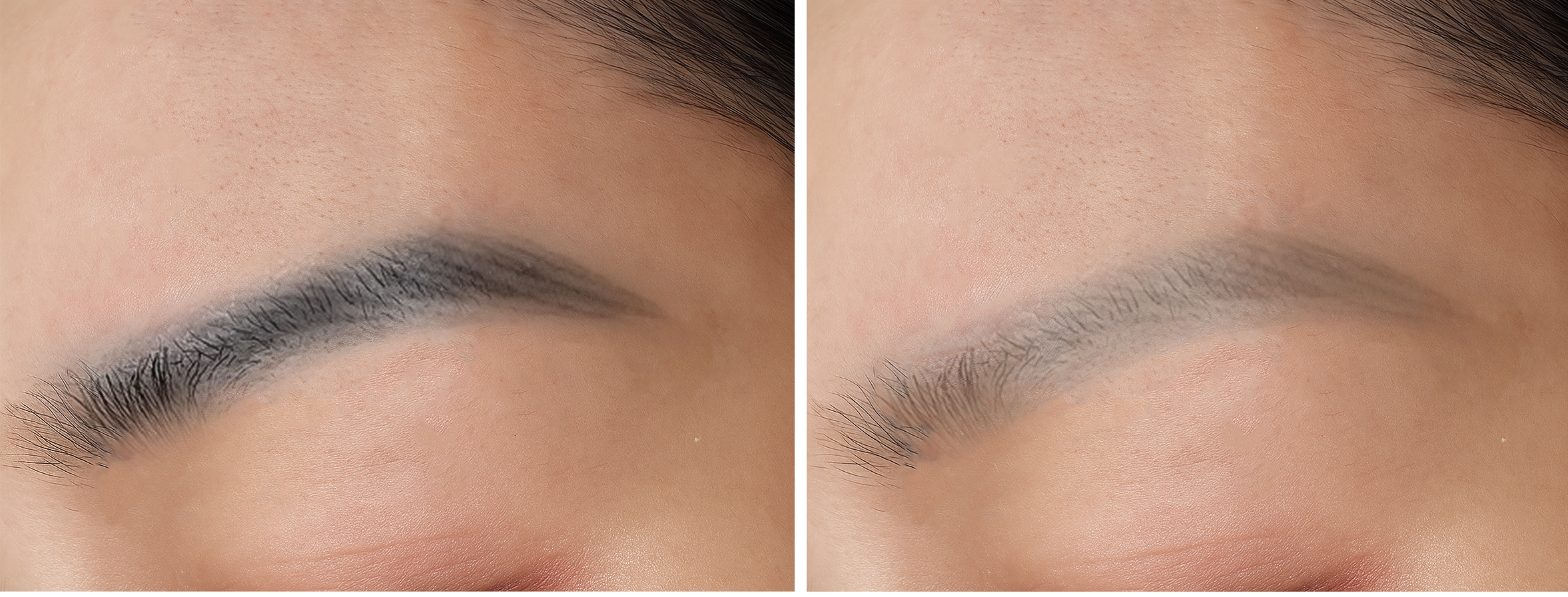 |
Mai's eyebrows before (left) and after one pico laser removal session (right). Photo: *Tam Anh General Hospital, District 7* |
Dr. Dung advises careful consideration before getting feng shui eyebrow tattoos. Those with sensitive skin, atopic dermatitis, or previous allergic reactions to tattoo ink should be especially cautious due to the risk of complications like contact dermatitis, prolonged redness and itching, and infection from unsterilized equipment. Low-quality ink or inexperienced technicians can also lead to undesirable eyebrow shapes and discoloration, which are difficult to correct later.
Those seeking tattoo removal should visit reputable medical facilities for consultation, monitoring, and treatment by qualified doctors to ensure effective skin recovery and minimize long-term complications. Consult a dermatologist if any redness, blisters, discharge, discoloration, or itching occurs after tattooing or removal. Avoid applying unknown substances or seeking further treatment at substandard spas, as this can worsen skin damage, cause permanent hyperpigmentation, or lead to scarring.
Minh Huong
*Name has been changed
| Readers can submit questions about cosmetic dermatology here for doctors to answer. |



